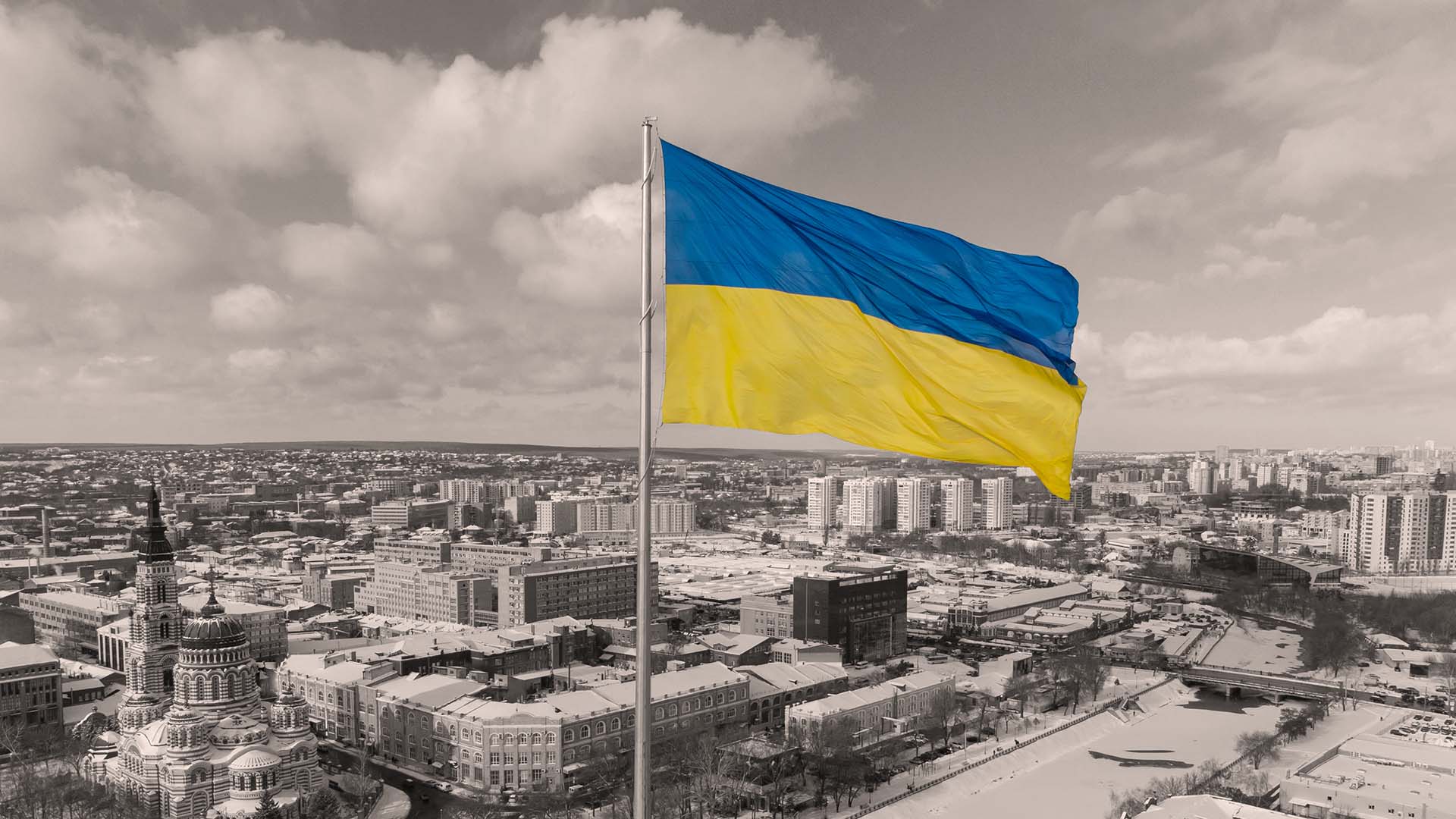We found this recent blog very helpful as it gives a good hear and now overview of the EU Temporary Protect Directive in place for Ukraine, and specifically details what it means for individuals.
Since the activation of the EU Temporary Protection Directive on 4 March 2022, EU Member States have announced its transposition into national legislation and there have been over 2.5 million registrations for temporary protected status in EU countries.
While the Directive provides a path for individuals leaving Ukraine to legally stay in an EU country and access social benefits (including accommodation, education and the labour market), in practice applicants still face many challenges.
Who’s Eligible?
EU rules state that temporary protection applies to Ukrainian citizens and their families; individuals holding international protected status (asylum) or similar protection in Ukraine, and their families; and Ukrainian permanent residents unable to return to their country or region of origin safely and durably; provided they resided in Ukraine on or before 24 February 2022.
Non-citizens in limbo
This leaves few options for non-Ukrainian citizens resident in Ukraine other than returning to their country of origin, potentially without having the means to do so. There have been reports of e.g., foreign Ukraine-based students being stopped at the border.
Ukrainian permanent residence under general immigration rules is difficult to obtain, as the grounds to apply are restrictive and applications are subject to a quota. Permanent residents are now funneled into a de facto asylum application process to prove they cannot safely return home. Asylum applications are cumbersome and arduous in most EU countries. Bulgaria and Sweden don’t even permit temporary protection applications from Ukrainian permanent residents. Only Portugal and Spain offer temporary protection to holders of Ukraine-issued temporary permits – but still require them to be unable to safely return home.
Timing issues
Those outside Ukraine on or before 24 February 2022 do not automatically qualify for temporary protection. Many EU countries offer extended stay for those stranded after short-term trips, but these individuals would be better protected if explicitly included in the scope of temporary protection. Only three EU/EEA countries (Austria, the Czech Republic and Iceland) expressly include those on short stay as eligible for temporary protection. Ukrainian citizens on holiday or short-term visits could be unable to claim temporary protection, having to prove individual danger to seek asylum status instead.
LGBT+ community
Ukraine does not permit same-sex marriage under national law, nor does it offer registered partnership for same-sex couples. Where a same-sex partner is a non-Ukrainian citizen, the obstacles to obtaining temporary protection are immense.
The definition of “family” and the recognition of same-sex couples is not uniform across EU countries. Out of 30 EU/EEA countries polled:
- 4 countries do not consider same-sex spouses as eligible dependents (including Bulgaria and Poland).
- 12 countries do not accept partners (including France, Italy and Switzerland), with an additional 2 (Austria and Portugal) requiring registered partnership (a status not available in Ukraine).
- 7 countries require proof of cohabitation ranging from six months (Sweden) to three years (Cyprus). A fair requirement, but who remembers to pack three years of utility bills when fleeing an armed conflict?
For those counting, that leaves only 8 EU/EEA countries (including Germany, Romania, and Spain) where same-sex couples with a non-Ukrainian partner have a chance at temporary protection.
Separately, trans individuals in Ukraine often do not have identification documents with gender markers matching their gender identity. For trans women, this has led to refusal of passage at internal checkpoints and at the border due to their identity documents having the “male” gender marker, and consequently falling under the martial law and military mobilisation of men aged between 18-60.
Registration difficulties
Let’s move to those who are eligible. Even for Ukrainian citizens, the process is not always as straightforward as anticipated. Some countries have a multi-stage application process, with waiting times and complex procedures at every stage, not to mention transfers to different authorities, increasing the ever-present risk of exploitation. Out of 30 EU/EEA countries polled:
- 8 countries have a multi-step application process (including Austria, Belgium and Hungary) – only Norway is confirmed to arrange transportation between authorities.
- 13 countries have a single-step application process (including Bulgaria, France and Poland) – some because further filing steps have still not been published.
- 5 countries offer online filing (including Germany and Portugal), with many others offering online appointment scheduling (a mixed blessing to those in unstable circumstances); and
- Only 4 countries include issuance of identification documents to those in need (including Estonia and Spain) – despite an understanding of individuals traveling with suboptimal documentation being built into the structure of the Temporary Protection Directive.
Labour market access
Similarly, labour market access varies significantly between EU/EEA countries. Out of 30 EU/EEA countries polled:
- 18 countries permit work upon receipt of temporary protection, with a further five (including the Czech Republic and Slovakia) additionally requiring Labour Office notification.
- Only 5 countries still require a separate work permit (including Austria and Hungary).
- Conversely, Italy and Portugal permit work immediately upon filing the temporary protection application; and Germany explicitly permits self-employment.
Most countries appear to permit both local employment and assignments, where the individual remains on their Ukrainian employment contract. It remains unclear whether temporary protection status holders would be permitted to work remotely from a host EU Member State for their Ukrainian employer. Remote work is still underregulated in most European countries, with only limited options for digital nomads or those seeking remote work on a visitor status.
Finding a job
Once work authorised, gaining access to employment can also be challenging. 28 EU/EEA countries require a diploma under standard immigration processes, which typically needs to meet certain education requirements or pass a local accreditation process. Degree recognition is problematic for regulated professions, some of which are long-standing shortage occupations in the EU/EEA region; for students seeking to continue their studies and having already lost effective study time during the pandemic. Not to mention the possibility that individuals fleeing the conflict may have lost or damaged their degree.
The European Commission has added the Ukrainian language to its pre-existing skills matching tool, and has called on EU Member States to act swiftly to recognise qualifications, but little is yet known about the practical impact of these measures. Only Romania has thus far allowed temporary protection status holders to self-assess their qualifications to expedite their labour market access.
Another notable initiative at EU level is the creation of an EU Talent Pool for temporary protection status holders, an online EU-wide skills matching platform which is scheduled to launch in July-August 2022, to match those seeking employment with suitable employers across the European Union.
Looking ahead
Temporary protection demonstrates the added value of EU action and the lessons learned from the 2015 refugee crisis. It equally showcases the challenges inherent in each EU Member State developing their own application procedure for an EU-developed status.
To help shape temporary protection as an EU success story, the EU could advocate granting biometric permits in line with its safety requirements, at least to those travelling without biometric passports; support in digitising application processes as modelled in Portugal; provide guidance on safety during transfers between authorities as ensured by Norwegian police; clarify labour market access to status holders which seems so obvious in Italy; and explicitly permit remote work to support the Ukrainian economy during the conflict.
The EU can serve as a forum for best practice exchange and a platform to support in this area, particularly since the Temporary Protection Directive is its own initiative. Although migration is traditionally a national competence, where EU Member States are hesitant to shift any competence to the European Union, immigration officials are overwhelmed and have been for a long time.
Original Blog Post: https://www.fragomen.com/insights/eueea-temporary-protection-for-ukraine-taking-stock.html
If you need support or advice in executing your Global Mobility strategy give us a call. We have years of experience in the field, and can fully support you at every stage of your Global talent management process.
If you have any further questions, or want more info about our services, please contact Yasmin Marshal on info@etesearch.com or call 01245 939188

